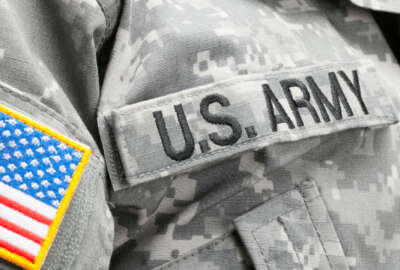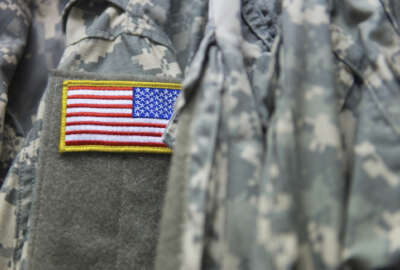
Army to experiment with new blended units of active, reserve forces
The Army is planning to co-mingle Army, National Guard and reservists to promote compatibility in peacetime and wartime.
The Army said Tuesday that it will begin testing a new process to co-mingle elements of its active duty force with National Guardsmen and reservists, aiming to make the active and reserve components as compatible during peacetime training as they have been in wartime during the latter years of the Iraq and Afghanistan wars.
The pilot project, dubbed “Associated Units,” borrows heavily from a longstanding Air Force practice in which Air National Guard and active duty airmen share responsibility for piloting and maintaining aircraft at a given base. The Air Force expanded the concept last month by beginning to integrate its chains of command through a new “Integrated Wing.”
By this summer, a dozen Army units will be part of active-reserve associations. In some cases, active component units will host smaller elements made of up reservists, in other cases the opposite will be true.
The soldiers “will develop relationships and standards in home station so they may fight together in combat without having to meet on the battlefield and figure these things out,” said Lt. Gen. Timothy Kadavy, the director of the Army National Guard.
In the first pilot, Task Force 1-28, an active duty infantry battalion at Fort Benning, Georgia will be folded into the 48th Infantry Brigade Combat Team, part of the Georgia National Guard. Both will fall under the command of the 3rd Infantry Division, an active duty division based at Fort Stewart, Georgia.
“They would train together, do professional development classes together, do field training exercises together,” Gen. Mark Milley, the Army chief of staff said last week as he outlined the concept before the House Armed Services Committee. “What we’re trying to do is put teeth behind the idea of ‘total force’ and make that real, to walk the walk, not just talk the talk.”
Following the test with the Georgia units, the Army plans to try the Associated Units notion in 11 other locations according to a map the service released Tuesday. In each of the pilot locations, the Army tries to pair active duty forces with National Guard and reserve units that are physically nearby.
For example, in Hawaii, the Army Reserve’s 442 Infantry Regiment will be paired up with the active component’s 3rd Brigade Combat Team at Schofield Barracks. In the northeast, the Vermont Army National Guard’s 86th brigade combat team will be associated with the 10th Mountain Division at Fort Drum, New York.
“This pilot facilitates readiness and strategic depth across components,” Lt. Gen. Jeffrey Talley, the chief of the Army Reserve, said in a statement. “These units will train, build readiness, and ultimately fight as one Army.”
In its final report in January, the congressionally-chartered National Commission on the Future of the Army strongly recommended that officials create more cohesion between active and reserve units in order to relieve tensions between the three Army components and to make better use of manpower as the Army continues to downsize to its smallest overall size since World War II.
“The Army has a long history of mixed results using multicomponent units … in many cases, the Army tried to implement multicomponent constructions in units or with policies that were not suited to the model,” the authors wrote. “Despite the challenges, multicomponent units represent one of the best ways to develop one Army, especially if members of the units can train together in peacetime and, if necessary, fight together in war. Multicomponent units can also draw on the differing strengths of the Regular Army, the Army National Guard, and the Army Reserve in ways that improve readiness.”
Copyright © 2025 Federal News Network. All rights reserved. This website is not intended for users located within the European Economic Area.
Jared Serbu is deputy editor of Federal News Network and reports on the Defense Department’s contracting, legislative, workforce and IT issues.
Follow @jserbuWFED




